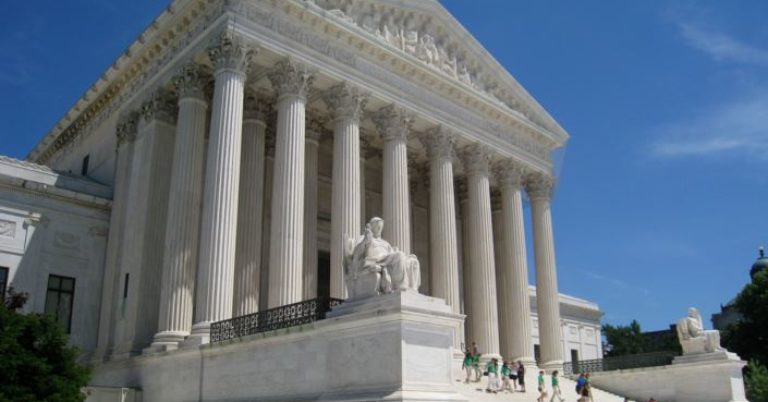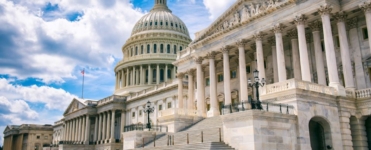
The Supreme Court’s key to locking the door on unconstitutional administrative legislation
It’s been almost 90 years since the New Deal era began. Yet, despite our constitutional guarantee of checks and balances, expansion of the largely unaccountable administrative state continues.
This raises the question: How and why has that been allowed to occur?
One factor is that over the years, Congress has delegated legislative power to the executive branch—allowing the Executive instead of the Legislature to promulgate laws based on policy choices. At the same time, the U.S. Supreme Court has largely acquiesced in this practice by adopting a flexible form of the nondelegation doctrine — the legal safeguard that describes constitutional limits on Congress’s authority to delegate its lawmaking power to another branch of government — that only rarely places practical limits on the administrative state’s lawmaking activities.
The Judiciary’s role in protecting separation of powers is integral because, it alone can resolve delegation challenges and ensure that constitutional limits on Congress’ authority to give away the legislative branch’s power are respected.
The Supreme Court touched on the doctrine this year in Gundy v. United States, decided in June, and in a denial of a petition for certiorari to hear Paul v. United States, issued in November. Neither decision resulted in a change to the nondelegation doctrine.
But several justices, including Justices Neil Gorsuch and Brett Kavanaugh, showed interest in revisiting the nondelegation doctrine to confine delegation of lawmaking authority to specific, limited circumstances.
Gundy v. United States
In Gundy v. United States, a plurality determined that the law at issue did not violate the nondelegation doctrine. That decision, with a concurrence in the judgment by Justice Alito, was enough to affirm the judgment of the lower court. Justice Gorsuch, however, joined by Justice Thomas and the Chief Justice, filed a lengthy dissent that provided a look back at what the Founders intended by entrusting the Judiciary to confine the legislative power to the legislative branch.
“The framers knew . . . that the job of keeping the legislative power confined to the legislative branch couldn’t be trusted to self-policing by Congress,” Justice Gorsuch wrote. “[E]nforcing the separation of powers isn’t about protecting institutional prerogatives or governmental turf. It’s about respecting the people’s sovereign choice to vest the legislative power in Congress alone.”
That power cannot, without violating the separation of powers and the sovereignty of the people, be delegated to the executive branch.
“So when a case or controversy comes within the judicial competence, the Constitution does not permit judges to look the other way; we must call foul when the constitutional lines are crossed,” Justice Gorsuch continued. “Indeed, the framers afforded us independence from the political branches in large part to encourage exactly this kind of ‘fortitude . . . to do [our] duty as faithful guardians of the Constitution.’”
1933 v. the 2020s
Before the 1930s, Justice Gorsuch noted in his Gundy dissent, the Court allowed Congress to delegate legislative authority in three clearly delineated ways:
- First, if Congress made the policy decisions, it could authorize another branch to “fill up the details.”
- Second, Congress could make application of a law dependent on fact-finding.
- Third, Congress could confer discretion to the Executive in areas that are already within the executive power, such as foreign affairs, which are already vested in the president under Article II.
These clear parameters gave way in the 1940s to the “intelligible principle” rule — an undefined term used in a 1928 case but then left “silently entombed,” as Justice Gorsuch wrote, until resurrected two decades later, after which it “eventually began to take on a life of its own” to “permit delegations of legislative power that on any other conceivable account should be held unconstitutional.”
Paul v. United States
The nondelegation doctrine was at issue again in the petition for certiorari in Paul v. United States. The Court denied cert, thus again leaving the nondelegation doctrine unchanged. Justice Kavanaugh, however, filed an individual statement in which he signaled his openness to revisiting the doctrine and drew attention to Justice Gorsuch’s dissent in Gundy, noting that his colleague “raised important points that may warrant further consideration in future cases.”
Justice Kavanaugh identified two models of statutory interpretation as relates to the regulatory authority of the executive branch or independent agencies:
- Congress has “expressly and specifically decide[d] the major policy question itself and delegate[d] to the agency the authority to regulate and enforce.”
- Congress has “expressly and specifically delegate[d] to the agency the authority both to decide the major policy question and to regulate and enforce.”
The second category, Justice Kavanaugh asserted, would not be allowed under Justice Gorsuch’s framework.
The New Deal era left marks on America’s system of checks and balances that persist to this day. But Justice Gorsuch and Justice Kavanaugh are breathing life into one element of judicial review that is long overdue for reexamination.
Building on this momentum, there is reason to believe five justices would be willing to revisit the doctrine. Court-watchers should be on the lookout for cases that may be a better vehicle for bringing the nondelegation doctrine back to its roots.



